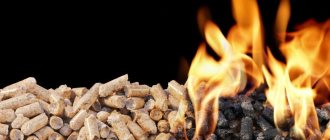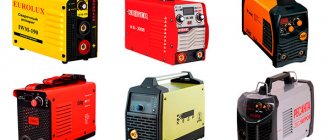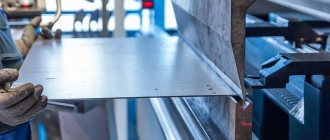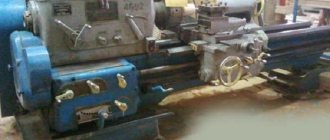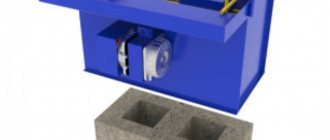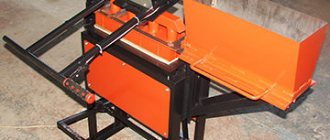Plastic has become a part of people's lives. It is difficult to imagine any modern industrial product that does not contain plastic elements. The business of producing plastic goods is a profitable investment. Fast payback is achieved due to high capacities and a wide range. Business profitability is above 100%.
In addition, the production uses raw materials made from recycled and disused products, so plastic can be used almost endlessly, unlike metal and wood.
Types of plastics and raw materials
workshop for the production of plastic products
The following types of plastics are used in the production of polymer products:
- polyvinyl chloride;
- polyethylene;
- polypropylene;
- high and low pressure polyethylene;
- polystyrene;
- polyethylene terephthalate.
One of the features of the production of plastic products is the selection of raw materials. Even the best equipment must be reconfigured when changing the manufacturer of the source material. Otherwise, the quality of the finished product will change.
Where should you start?
The first thing you need to do before organizing production is to choose which groups of goods you will produce.
A lot depends on your specific capabilities. For example, if it is possible to agree on the supply of containers for packaging semi-finished products, you should start with it. This will give a good start to the production process. Later, if necessary, it will be possible to expand and engage in the production of other product groups. If there are no developments, then you should start with consumer products:
- buckets;
- flower pots;
- containers for seedlings;
- packaging.
Production technology
All types of plastic products are produced according to a single algorithm:
- creation of a certain chemical composition;
- gas is introduced into the polymer environment (in the manufacture of foams and foam plastics);
- giving the resulting mass the required configuration (casting);
- fixation of the final form.
In the first stage, the various ingredients are mixed until a plastic substance is obtained. Next, a gas phase is introduced into the polymer using one of the methods: mechanical foaming, introduction of rapidly boiling substances that evaporate when heated, or injection of gas directly under pressure. The production method depends on the type of product and the type of polymer.
There are several methods for producing plastic products:
- vacuum forming - the required shapes are obtained from sheets of plastic under various pressures;
- compression molding - the workpiece is compressed inside the mold, excess material is squeezed out through the cracks;
- compression molding - the amount of material required during production is poured into the mold, the halves of the mold are brought together and the product is extruded;
- casting (casting) - the plastic mass is converted into a liquid state and poured into molds corresponding to future products. Most items are produced in this way: dishes, stationery, etc.;
- blowing - the heated mass is fed into a mold, which is sealed and filled with air. The polymer is distributed evenly over the internal surfaces of the mold;
- extrusion - the mass is softened and pressed through a matrix, creating the required shape;
- thermoforming;
- encapsulation;
- layering molding.
What technology allows
Using a plastic injection machine, you can quickly and inexpensively create a small series of parts of any complexity. The features of this method are:
- the ability to obtain exact copies of the master model that have stable sizes and shapes;
- carrying out tests before producing a series;
- obtaining plastic models that are suitable for the manufacture of a small series of metal parts;
- the ability to test structures for operability and assembly;
- finalization of product design;
- production of a batch of samples in a short time using casting and silicone molds.
Equipment for the production of plastic products
For the manufacture of products from various types of plastics, ready-made production lines or separate machines are used.
Extruders
conical twin screw extruder
A large group of machines that produce: tubular and sheet films, window profiles, pipes, polymer sheets, plastic slates, foam profiles.
The flat-slot installation includes the following set of elements:
- extruder with filtration system;
- pneumatic loaders;
- blowing head with cooler;
- calibration mechanism;
- pulling device and rotating horizontal rods;
- flat lay module;
- winder
The main device of the machine is an extruder; all additional mechanisms make up the extrusion line. Production operates automatically, controlled by a program.
Injection molding machines
Plastic injection molding machines. The prepared mass is poured into molds and cooled, resulting in a finished piece product. 75% of all plastic products on the planet are produced on such machines. The technology allows you to create products of complex shapes that exactly match the required dimensions, reinforced, hollow, products made from several colors of plastic, hybrid, foam and others. The injection molding machine can work with any type of plastic.
The design of the machine contains:
- material preparation module;
- module for closing and opening forms;
- drive unit;
- automatic control unit.
Plastic injection molding equipment is expensive and contains many innovative solutions. By design, injection molding machines are divided into:
- two- and single-screw, worm-piston and piston;
- with one or more plasticization units;
- with separate or combined plasticization;
- by the number of mold closure nodes: single-position or multi-position;
- electrical, hydromechanical, electromechanical.
Blow molding machines
They are used for the production of hollow containers with thin walls, for example, canisters, barrels, bottles with a capacity of up to 5 thousand liters. The blow molder heats the material and molds it using the blow molding method. Often the blow molding method is combined with injection molding in a single injection-blow molding machine. This is how PET containers are produced.
Extrusion blow molding machines
They combine blowing and extrusion technologies, therefore they can produce a wider range of products than blow molding machines: fuel tanks, bumpers, pallets, seats, buckets, barrels, toys, bottles for ketchup and milk, bottles for cosmetics. All processes are controlled by a microprocessor. The machines are classified:
- by type of heads;
- by the number of posts;
- by the number of streams.
The machine structure includes:
- an extruder in which raw materials are converted into a soft, homogeneous mass;
- The extrusion head is located at the exit of the extruder, and the mass passes through it. The head can be multi- or single-strand, angular or straight-flow. The mass passing through the extrusion head forms a sleeve or pipe blank;
- The blowing part is the main unit of the machine, compressed air is supplied here (through a needle, nipple or mandrel), the mold is supplied and closed, the workpiece is cooled, the mold is opened and the product is removed. The weld seam is also cleaned here.
The extrusion blow molding machine is equipped with a compressor and a cooler.
Thermoforming machines
thermoforming machine
This is equipment for making continuous film products. The thickness and composition of the film may vary. The main products are plastic and paper disposable food containers and glasses.
The operating principle of a thermoforming machine: the material is heated to 140 degrees Celsius, and the product is blown out of the roll. Typically, production uses a film with a thickness of 100 micrometers.
Thermoforming machines can be belt, rotary, turret, multi- or single-station. In addition to molding, products are cut out and sealed on a belt machine. Revolving and rotary are more suitable for molding. The process is controlled automatically, manually or semi-automatically.
General purpose equipment
Grinding machines
Grinding refers to the process of breaking down pieces of solid material to specified sizes necessary for the industrial use of the grinding product.
The grinding process is divided into two stages:
- Splitting up
- Grinding
In some cases, the first stage, “crushing,” is quite sufficient to perform technological tasks in the production of one or another type of polymer material.
Such tasks, for example, include crushing substandard production products, followed by their return to the production cycle during casting, extrusion and calendering of a wide range of polymer materials.
As a result of crushing, particles (pieces, crushed pieces) with dimensions of (2-20) mm are formed.
When "grinding" the starting material is the product formed during crushing. As a result of grinding, the particle size of the final product is (0.1-0.3) mm.
It should be noted that grinding is used much less frequently than crushing and is used mainly in the processes of producing composite materials, for example PVC compositions, vulcanized rubber powder, as well as in the processes of producing various polymer mixtures, which require good distribution of dissimilar components during the mixing process.
Grinding compared to crushing is a much more expensive process in terms of both capital and operating costs.
For crushing, mechanisms called crushers are used, which, according to their design and principle of operation, are divided into:
- Cheek
- Conical
- Roller
- Hammer
- Runners.
Mills are used for grinding. Based on their design and operating principle, the following types of mills are distinguished:
- Drums
- Roller pendulum
- Hammer
- Aerofol type mills
- Vibrating
- Jet.
Sorting machines
In a number of cases, when conducting the technological process of plastics processing at the stages of raw material preparation and also during final operations, for example during granulation, it is necessary to separate smaller fractions from larger ones in order to obtain particles of polymer material within specified sizes.
There are the following methods for sorting materials:
- mechanical separation (screening)
- air (separation)
- hydraulic (classification)
- electromagnetic separation.
For mechanical separation, screens are used, which are divided into flat, with horizontal or inclined sieves, and drum screens in which the sieve has the shape of a cylinder or a multifaceted truncated pyramid.
The action of air separators is based on the action of air flows on particles of a certain weight and size, taking into account the various aerodynamic characteristics of these particles.
Electromagnetic separators are used to separate particles with metallic inclusions from the bulk of the raw material. Electromagnetic separation systems are widely used in production in various technological processes in systems for automatically blocking the operation of process equipment when metal particles enter the bunkers and roll groups of processing machines (extruders, calenders).
Devices for purifying air from gases and dust
As a result of crushing and grinding, as well as during the transportation of polymer materials, their loading and mixing, small particles are formed in the form of dust, the presence of which negatively affects the progress of the technological process, and also leads to dust in production premises and emissions into the environment.
To clean dust-air and gas-air mixtures, the following cleaning methods are used:
- mechanical dry in centrifugal cyclones
- using fabric filters
- electrical
- wet.
Most plastic processing processes are accompanied by thermal effects on polymer materials, during which vapors and gases are released, which can also be captured. Collecting gases and vapors can be carried out in electric precipitators, and the degree of purification can reach up to 99.5%.
During wet cleaning, gases and vapors are captured as a result of sorption by an appropriate sorbent. In some cases, sorted vapors and gases can be reused after the desorption process.
Shutters. Feeders. Dispensers
The valves are designed to block the outlets from the hopper during dosing.
Basic requirements that the shutter must satisfy:
- little effort to open and close,
- short time for closing and opening,
- tightness and impossibility of spontaneous opening,
- possibility of regulating the output (flow) of material.
There are valve, retaining, gate and sector valves.
Feeders are designed for continuous supply of polymer material into containers, pipelines, and bunkers.
Depending on the design, feeders are divided into: belt, tray, pendulum, sector, drum, disk, screw (screw).
Dispensers are designed to supply materials to the technological process in a given quantity.
As a rule, the operation of dosing the material precedes mixing.
- According to the physical principle of operation, volumetric and weight dispensers are distinguished
- Depending on the type of operation, dispensers can be manual or automatic
- By type of technological process - continuous and periodic.
At the heart of the design of volumetric dispensers there is always an element that controls a certain volume of a portion of the loaded material, for example, in a batch volumetric dispenser, this is a hopper of a certain volume, when filled, it is unloaded.
The operation of a continuous volumetric dispenser can be tied to the number of piston strokes in a cylinder of a certain volume or the operating time of a pump of a certain capacity.
Weighing dispensers contain structural elements that are capable of determining the mass of the dispensed material with a sufficient degree of accuracy. These elements are lever mechanisms (load levers) or strain gauges.
Material Mixing Machines
Blending is a process in which two or more components are mixed in a specific ratio to produce a homogeneous mixture.
Depending on the type of technological process, mixing can be periodic or continuous.
Mixers for liquid materials are used for the preparation of various solutions, suspensions, emulsions, as well as for the integration of heat and mass transfer processes.
Mixers for liquid materials are divided into: mechanical and pneumatic, and mechanical - into paddle, propeller, turbine and special.
Mixers for bulk materials can also be batch or continuous.
Structurally, batch mixers, depending on the type of working body, are divided into: mixing drums, worm-blade, plunger, belt, centrifugal mixers, runner mixers.
Mixers for plastic (viscous) materials, depending on the viscosity of the mixed materials, are divided into: blade, turbine, belt, disk, comb, planetary with a rotating body and blade (moving and stationary), anchor and frame, with double blades (rotating in opposite directions), with a vertical screw, ball mills, roller mills, mixing runners, worm and rotary.
Equipment for transporting materials
During technological processes for processing plastics, it is necessary to carry out operations to move raw materials and materials.
These operations are carried out using transport mechanisms. Transport mechanisms are classified depending on the type of driving force that moves the load.
On this basis they are divided into:
- conveyors,
- pneumatic conveying units
- hydrotransport installations.
Conveyors, according to their design, are divided into:
- tape,
- lamellar,
- scraper,
- bucket,
- scraper-bucket,
- cradleboards,
- trolley,
- cargo handlers,
- hanging,
- rod,
- walking,
- escalators,
- elevators,
- screw,
- swinging,
- roller with rotating pipes.
The last four types of conveyors do not have a traction element (belt, chain, rope, rod).
Mini plastic injection machines
This is a type of desktop mini-machine for producing small parts in small batches. Single or multiple forms are used. The weight of the mini-machine is about 15 kg, it can easily be placed on any strong table, which is why it is called a tabletop machine. Some mini models come with a work desk. Mini-models with electric drive and automatic closing module are more compact. These mini-tabletop machines are used to produce experimental parts for new equipment.
Video about vacuum forming machines:
Special equipment
Blow molding machines are designed for the production of hollow vessels that have thinner walls: barrels, canisters and bottles.
This unit helps to heat the material and blow mold it. This method is combined with injection molding in one injection blow molding machine. Extrusion blow molding machines combine the following techniques: extrusion and blow molding.
In this case, it is possible to produce a wider selection of products than blow molding machines. All processes are controlled by a microprocessor.
Machine classification:
- by the number of streams;
- by type of heads;
- by number of posts.
A tabletop manual press for plastic injection is designed for the production of medium-sized products in small batches. This machine weighs no more than 15 kg. Fits perfectly on the table.
If you purchase it in a store, then in some cases the table itself is included in the kit. A tabletop plastic injection molding machine is needed to produce parts of new designs as an experiment.
Tabletop plastic injection machine
Advantages of plastic furniture
The stereotype that a room interior should include products made exclusively from natural materials has long lost its relevance. Plastic furniture is easy to produce and has a number of interesting advantages.
- Does not lose brightness. The production of plastic furniture involves applying any colors to manufactured parts and accessories. Polymers are not prone to fading, which is why many buyers prefer this material.
- Stylish design. Plastic is associated with modernity. Polymer furniture will look great in loft and urban interiors. It is possible to produce various futuristic forms that fit into the style of the room.
- Lightweight and high quality. Furniture made from high-quality polymers has increased durability. Modern molds allow you to create waterproof models. You definitely won’t have to worry about spilled tea.
- Convenient storage. Plastic products can be folded and stacked. They are quite compact and do not take up much space.
Among the shortcomings, it is worth noting, perhaps, special storage requirements. Plastic chairs or tables should definitely not be taken out into the cold or kept near heat sources.
Mold for plastic chairs
Injection molding technology
Plastic injection molding technology includes the following production processes:
- Loading raw materials into a vacuum loader. In this case, the raw materials used can be in the form of granules, powders or tablets.
- Supply of raw materials to the hopper of the injection molding machine.
- Heat. The heated surface of the screw located in the hopper melts the polymers and, if necessary, mixes them with fillers.
- Pour the plastic into the mold. Under the influence of axial force, the molten polymers are extruded into the mold.
The advantages of this type of casting include the following:
- High quality products.
- High performance indicators.
- The casting process can be fully automated.
Advantages of working with KAMI
The company's website presents a large selection of equipment from popular Russian, Asian and European machine tool manufacturing enterprises. The selection of furniture machines occurs only after in-depth technical analysis and monitoring of consumer demand in the market. Therefore, the KAMI range meets customer needs 100%. We guarantee:
- High-quality service - 100+ engineers in Moscow and the regions will solve any issues regarding the maintenance and setup of installations.
- Delivery throughout Russia.
- Technical support when choosing equipment.
- Personal offers - to buy a product at an affordable price, leave a request on the website.
Order!
Homemade plastic molding
Do-it-yourself home plastic molding is a type of industrial version of the manufacture of plastic products. It allows you to produce any not very large products. For example, such as:
- various caps and lids;
- housings;
- toys;
- cubes;
- dishes;
- souvenirs.
Equipment for small-scale casting
Small-scale casting does not require the purchase of expensive equipment. For a small workshop it will be enough to purchase the following:
- Tabletop manual machine for plastic injection.
- Form-forming part of the mold.
- Silicone for molds.
- Two-component plastic.
A tabletop casting machine is a type of foundry equipment used for small-scale production. He can carry out his work using both single and multi-place forms. To install such a machine, an ordinary desktop of a small area is quite enough, the main thing is that it is stable.
Currently, there are modifications of machines with electromechanical drives. They are more reliable and easier to maintain. Some of the advanced models of such units are even equipped with an automatic clamping unit. A manual casting machine allows you to produce an average of 10 to 15 products per hour.
Making your own silicone molds
You can make molds for plastic injection at home yourself. To do this, you will first have to prepare a sample model. Its production can be ordered from the owner of the 3D printer.
Next we proceed as follows:
- Using a wide brush, carefully coat the sample with a thin layer of silicone.
- We place it in a pre-prepared formwork.
- We fill the entire volume of the formwork with silicone.
- We wait 7-8 hours until the silicone completely hardens.
- We make a cut shape.
Your first mold is ready, now you can start hand casting.
Main types of silicones for making molds
There are quite a lot of silicones for making molds, the most common of them are discussed below:
- Mold Star 15,16,30. This series of silicones hardens well at room temperature. Can be used to produce molds with very good detail. Chemically sensitive to latex and sulfur. The number in the classification means the hardness indicator. They have a two-component base, which is mixed immediately before pouring.
- Rebound 25, 40. Used to create shapes using the “spread” method. Silicone is simply applied to the sample with a brush. Can be used in combination with various plasticizers and modifiers. They are two-component formulations.
- Sorta Clear 18, 37, 40. Translucent silicones, well suited for creating cut shapes. They can also be used together with various additives and hardening accelerators.
Main characteristics of two-component plastics
Liquid two-component plastics are quite widely used in small-scale casting. There are quite a few brands of such polymers. Their main difference is the density and hardness of the finished product. Also, depending on the additives, they can have different texture and color. After mixing the components that make up the polymer, an accelerated process of hardening or polymerization begins, which usually lasts no more than 10 minutes.
The use of liquid plastics makes it possible to implement a variety of design solutions. Also, such polymers are very often used to create prototypes and models during design development.
Products made from liquid plastic are in no way inferior to industrially produced analogues. They are just as strong, beautiful and durable. In addition, the market for liquid polymers is constantly expanding and improving, which makes it possible to purchase more and more advanced samples.
Interesting articles:
Which machine to choose for vacuum molding of plastic?
What equipment to buy for plastic welding?
Business for processing polyethylene waste into granules.
Silicone molding technology
For silicone molds, you will also need to purchase a special liquid plastic for casting. It does not require preheating and hardens perfectly at room temperature. Molding plastic into silicone molds looks like this:
- The casting mold is thoroughly cleaned of dust and other contaminants.
- Both halves of the form are firmly secured using rubber bands, tape or any other available materials.
- Two-component plastic for casting is diluted in a container. Both of its components should be mixed very thoroughly. In this case, you need to act as quickly as possible. After just a few minutes, the plastic begins to set. At this stage, dye is added to the composition to give a certain color.
- The thoroughly mixed mixture is poured into the mold in a thin stream. It must even fill the casting channel. After the degassing process, the volume of the material will decrease slightly.
- Wait for the product to cure. Usually this takes no more than 10-15 minutes.
Injection plastic allows you to create a small amount of original designer products with your own hands.
Manual casting technology
Casting methods using a manual machine are somewhat similar to industrial ones. The process itself looks like this:
- Installation of injection molding nozzle on the machine.
- Applying a layer of silicone to the surface of the mold.
- Installing the mold on the unit.
- Loading raw materials into the bunker.
- Stirring and heating polymers using a screw.
- Casting.
- Cooling.
- Disassembling the mold and removing the finished product.
The tabletop injection molding press is ideal for small production environments. It is highly versatile. He can cast products from almost any type of polymer. To increase productivity, a plastic injection press should be equipped with several similar molds at once. This allows for a virtually uninterrupted production process.
Additionally, finished products can be fastened together using a special welding extruder. This allows us to significantly expand the injection molding business by producing more complex products.


